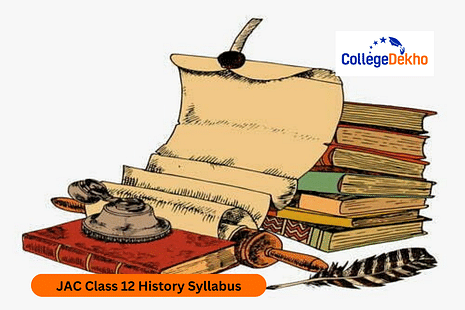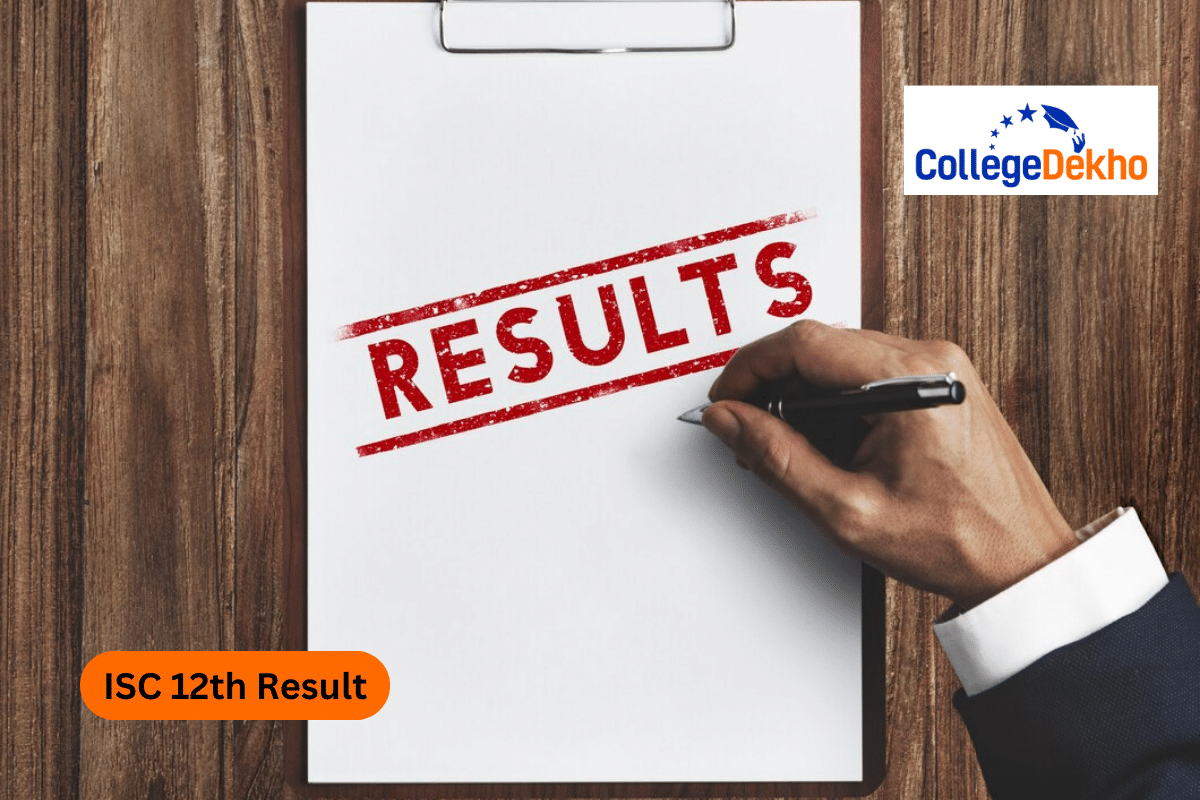

Never Miss an Exam Update
JAC Class 12 History Syllabus 2025 has been released by the Jharkhand Academic Council (JAC). The history syllabus is divided into 3 parts and each has 4 units which are further divided into chapters. Each part is of 25 marks and a map section will also be there which is of 5 marks. The theory paper will be conducted for 80 marks and 20 marks will be of project work. Students must be thorough with the entire syllabus as well as the JAC Class 12 Exam Pattern 2025 to understand the marking scheme. In a few months, the JAC Class 12 Board Exams will take place. We are all aware of how important the class 12 exam is to our future. It has the power to make or break your career. Every student who intends to sit for the exams should ensure they are adequately prepared. Before starting to prepare, students go through every topic once. To know further about the JAC Board Class 12 History syllabus read this complete article.
JAC Class 12 History Syllabus 2025
The chapters in History are majorly focused on topics related to civilization, developments, population, and much more. Candidates can refer to the following list of JAC 12 syllabus 2025 for History.Theme No. and Title | Learning outcome with specific competencies |
|---|---|
Themes in Indian History Part—I | |
1. BRICKS, BEADS AND BONES: The Harappan Civilisation |
|
2. KINGS, FARMERS AND TOWNS: Early States andEconomies (c.600 BCE 600 CE) |
|
3. KINSHIP, CASTE AND CLASS: Early Societies (c. 600 BCE600 CE) |
|
4. THINKERS, BELIEFS AND BUILDINGS: Cultural Development (c. 600 BCE600 CE) |
|
Themes in Indian History Part—II | |
5. THROUGH THE EYES OF TRAVELLERS: Perceptions of Society (c. tenth to seventeenth centuries) |
|
6. BHAKTI –SUFI TRADITIONS: Changes in Religious Beliefs and Devotional Texts (c. eighth to eighteenth centuries) |
|
7. AN IMPERIAL CAPITAL: VIJAYANAGARA (c. fourteenth to sixteenth centuries |
|
8. PEASANTS, ZAMINDARS AND THE STATE: Agrarian Society and the Mughal Empire (c. sixteenth seventeenth centuries) |
|
Themes in Indian History Part—III | |
09. COLONIALISM AND THE COUNTRYSIDE: Exploring Official Archives |
|
10. REBELS AND THE RAJ: 1857 Revolt and its Representations |
|
11. MAHATMA GANDHI AND THE NATIONALIST MOVEMENT: Civil Disobedience and Beyond |
|
12. FRAMING THE CONSTITUTION: The Beginning of a New Era |
|
Also Check
How to Download JAC Class 12 History Syllabus 2025?
Below are the important steps students must follow to download the JAC class 12 History syllabus 2025. The PDF files can be accessed from any device and can be downloaded for study. Students can follow these instructions to download the JAC class 12 History 2025 syllabus JAC board.
- Step 1: Students must visit JAC's official website.
- Step 2: Go to the 'others' tab and click on it.
- Step 3: Click on the 'JAC 12 Syllabus 2025' link.
- Step 4: The JAC 12 syllabus link will be displayed on the screen.
- Step 5: Download the JAC Class 12 Syllabus 2025 in PDF file format.
JAC Class 12 History Syllabus 2025 - Download PDF
The Class 12 History syllabus is an excellent resource for students who want to work in history, politics, or other humanities-related subjects. Check here JAC Class 12 History Syllabus 2025 PDF
JAC Class 12 History Exam Pattern 2025
There are 4 units in the JAC Class 12 History syllabus 2025, which will further consist of 4 chapters each. The unit-wise JAC Class 12 History blueprint 2025 has been tabulated below:
| Themes | Topics | Periods | Marks |
|---|---|---|---|
| Themes in Indian History Part—I | - | 25 | |
| Theme 1 | Bricks, Beads and Bones | 15 | |
| Theme 2 | Kings, Farmers and Towns | 15 | |
| Theme 3 | Kinship, Caste and Class | 15 | |
| Theme 4 | Thinkers, Beliefs and Buildings | 15 | |
| Themes in Indian History Part—II | - | 25 | |
| Theme 5 | Through the Eyes of Travellers | 15 | |
| Theme 6 | Bhakti –Sufi Traditions | 15 | |
| Theme 7 | An Imperial Capital: Vijayanagar | 15 | |
| Theme 8 | Peasants, Zamindars and the State | 15 | |
| Themes in Indian History Part—III | - | 25 | |
| Theme 10 | Colonialism and The Countryside | 15 | |
| Theme 11 | Rebels and the Raj | 15 | |
| Theme 13 | Mahatma Gandhi and the Nationalist Movement | 15 | |
| Theme 15 | Framing the Constitution | 15 | |
| Including Map Work of The Related Themes | 15 | 5 | |
| Total | 80 | ||
| Project work | 25 | 20 |
List of Maps
| Book 1 | ||
|---|---|---|
| 1 | Page 2 |
Mature Harappan sites:
● Harappa, Kalibangan, Banawali, Balakot, Rakhigarhi, Dholavira, Lothal, Nageshwar, Mohenjodaro, Chanhudaro, KotDiji. |
| 2 | Page 30 |
Mahajanapada and cities:
● Vajji, Magadha, Kosala, Kuru, Panchala, Gandhara, Avanti, Rajgir, Ujjain, Taxila, Varanasi. |
| 3 | Page 33 |
Distribution of Ashokan inscriptions:
● Shakas, Vakatakas, Satavahanas, Guptas ● Towns/Cities: Braghukachchha, Puhar, Mathura, Kannauj ● Sanchi, Topra, Meerut Pillar, and Kaushambi inscriptions on pillars; ● Chola, Chera, and Pandya kingdoms. |
| 4 | Page 43 |
Important kingdoms and towns:
● Kushanas, Shakas, Satavahanas, Vakatakas,Guptas ● Cities/towns: Mathura, Kanauj, Puhar, Braghukachchha, Shravasti, Rajgir, Vaishali, Varanasi, Vidisha |
| 5 | Page 95 |
Major Buddhist Sites:
● Nagarjunakonda, Sanchi, Amaravati, Lumbini, Nasik, Bharhut, Bodh Gaya, Ajanta. |
| Book 2 | ||
| 6 | Page 174 | Bidar, Golconda, Bijapur, Vijayanagar, Chandragiri, Kanchipuram, Mysore, Thanjavur, Kolar, Tirunelveli |
| 7 | Page 214 |
Territories under Babur, Akbar and Aurangzeb:
● Delhi, Agra, Panipat, Amber, Ajmer, Lahore, Goa. |
| Book 3 | ||
| 8 | Page 297 | Territories/cities under British Control in1857:Punjab, Sindh, Bombay, Madras Fort St. David, Masulipatam, Berar, Bengal, Bihar, Orissa, Avadh, Surat, Calcutta, Patna, Benaras, Allahabad and Lucknow. |
| 9 | Page 305 | Main centres of the Revolt of 1857:Delhi, Meerut, Jhansi, Lucknow, Kanpur, Azamgarh, Calcutta, Benaras, Gwalior, Jabalpur, Agra, Awadh. |
| 10 | Important centres of the National Movement: Champaran, Kheda, Ahmedabad, Benaras, Amritsar, Chauri Chaura, Lahore, Bardoli, Dandi, Bombay (Quit India Resolution), Karachi. | |
Students are advised to go through the JAC Class 12 History exam pattern as well as syllabus 2025 to understand the marking scheme. This will help them prepare and score well in the JAC Class 12 Result 2025 .
Was this article helpful?


















